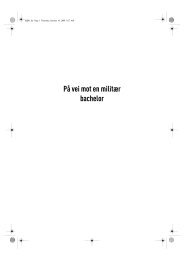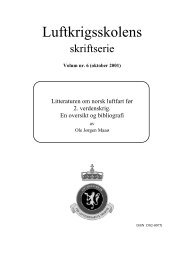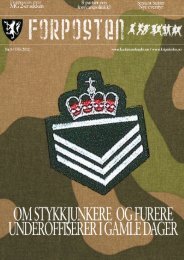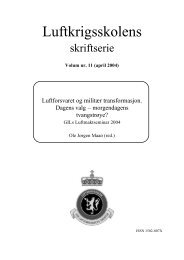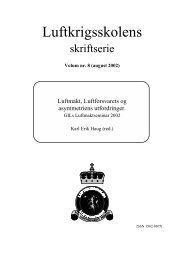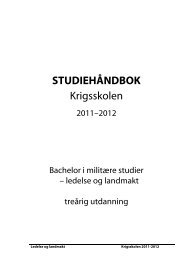Wilhelm Mohr
Wilhelm Mohr
Wilhelm Mohr
Create successful ePaper yourself
Turn your PDF publications into a flip-book with our unique Google optimized e-Paper software.
PART I – The Contribution of the Norwegian Air Forces<br />
The stage is set.<br />
Because of the occupation of Norway, the strategic importance of the<br />
Northern waters and regions to the Battle of the Atlantic was highly<br />
accentuated. Even before North Norway fell, British forces had occupied<br />
Iceland and placed army and air forces there for its protection and<br />
to carry out sea and air operations.<br />
The last six months of 1940 had seen very large losses inflicted by<br />
the German submarines on merchant shipping and the threat seemed<br />
ever increasing. In addition the cruiser «Scheer» was active, shortly<br />
after followed by the «Hipper». Soon the battleships «Scharnhorst»<br />
and «Gneisenau» were expected to play their part.<br />
In late 1940 discussions between the Commander of the joint Norwegian<br />
Air Forces HQ in London and the Air Ministry highlighted<br />
the value of using our 18 available Northrop seaplanes in support of<br />
the Costal Command activities in Icelandic waters. The tasks would<br />
be maritime reconnaissance, control and search, anti-submarine operation,<br />
convoy escort, transport and any other defence support needed<br />
for Iceland proper that might arise.<br />
The Northrop was a patrol aircraft on floats, single engine, speed<br />
160 mph with endurance up to 7 hours. It had 4 wing-mounted<br />
machineguns and 2 free, one for the navigator and one for the telegraphist.<br />
It could carry 3 depth charges weighing up to a total of 1,200<br />
pounds.<br />
The first contingent of the squadron arrived in Iceland from the<br />
UK on 12 April 1941, followed some months later by personnel from<br />
«Little Norway». This brought the strength to about 200. At that time<br />
the aircraft were transported by ship and, although 41 ships were sunk<br />
in the Atlantic that month, they all arrived safely. The formidable task<br />
of assembling the aircraft from crates and bringing them into use must<br />
be recorded. On 23 June 1941, 330 became the first operational Norwegian<br />
squadron established outside the country. It also became the<br />
largest of the Allied air units stationed in Iceland.<br />
As only one airfield existed on the island (by Reykjavik), it was found<br />
opportune to have the seaplane squadron split into three parts: «A»<br />
flight to remain in Fossvagur near Reykjavik, which was also the site<br />
43



